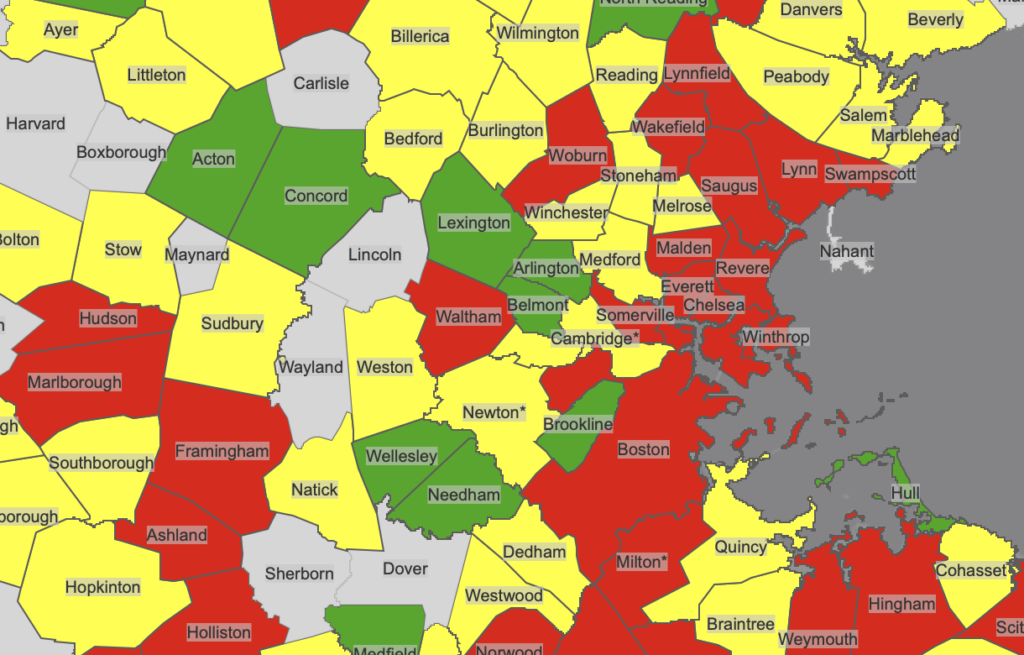Photo: Belmont Helps Free Masks table during Belmont Serves weekend. More than 2,500 masks have been gifted by our mask drive.
To the editor:
We keep hearing Massachusetts Covid-19 positives are escalating, and not everyone clearly knows what that means. As of Oct. 28, Massachusetts marked more than 150,000 people testing positive for Covid-19. The next day, the Massachusetts Department of Public Health marked Belmont as yellow – as a community at moderate risk for infection – for the first time with 16 cases confirmed the past 14 days and a 4.2 average daily incidence rate.
Belmont Helps has been tracking confirmed Covid-19 cases since it began. We track the numbers in Belmont, Middlesex County, and Massachusetts as published weekly by the Belmont and Massachusetts health departments. Before this week, Belmont has been in the green or gray category on the Daily Incident Rate charts, faring better than some of our neighboring towns. Belmont has registered 293 positive cases to date. Covid-19 often carries a variety of symptoms, and sometimes no symptoms during its contagious period.
Ways to help keep numbers down is to wear a mask, wash your hands often, limit your exposure to others, stay home if feeling any symptoms, and limit large group gatherings.
Feel free to check numbers anytime at belmonthelps.org, and click on Covid#’s.
Amy Kirsch
Lead chair of Belmont Helps
